Experience-Seeds-Knowledge-Plant Discoveries-Ecological Enrichment-Join Now Click Here!

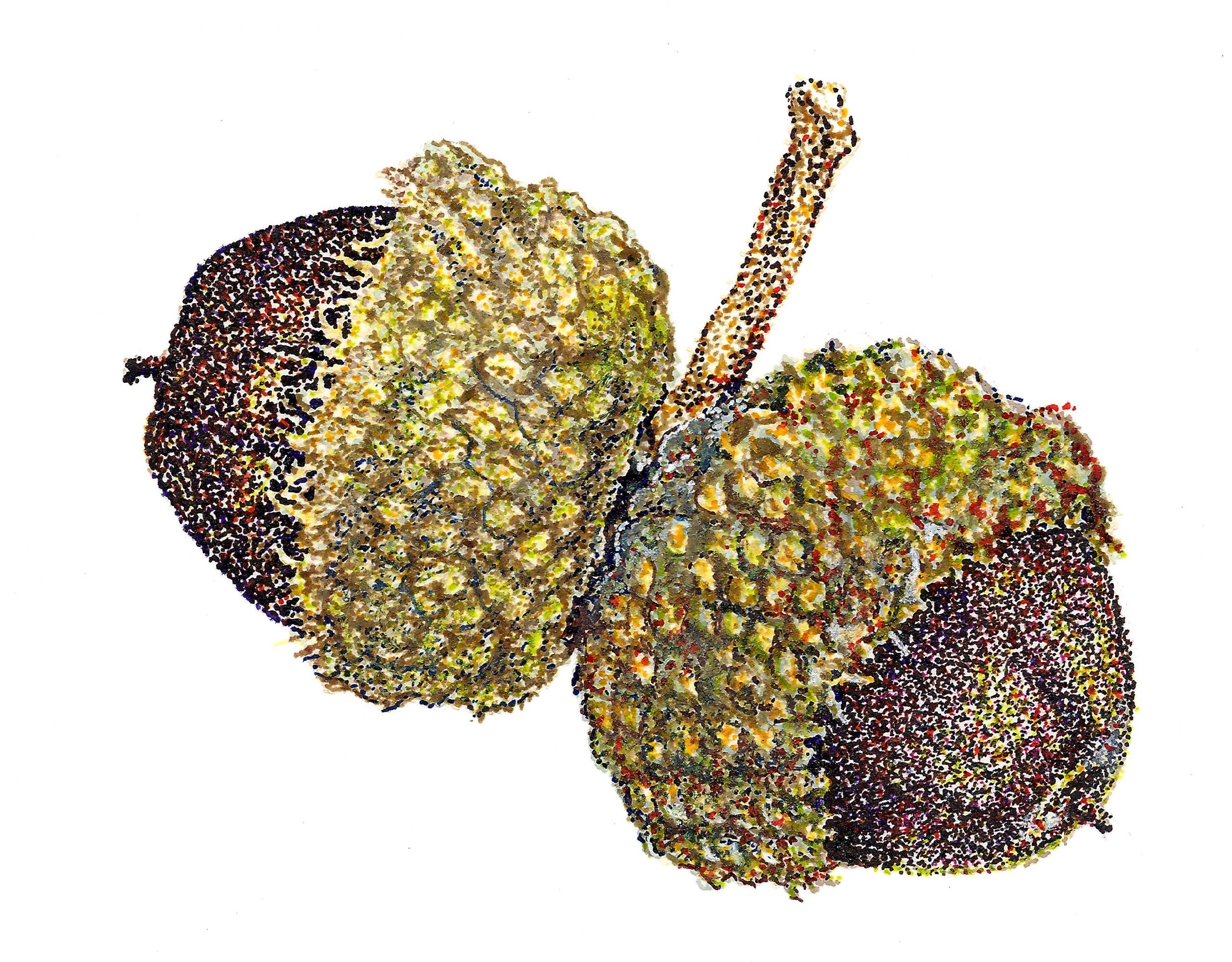
One Farmer-One Mission-One Goal-Oaks
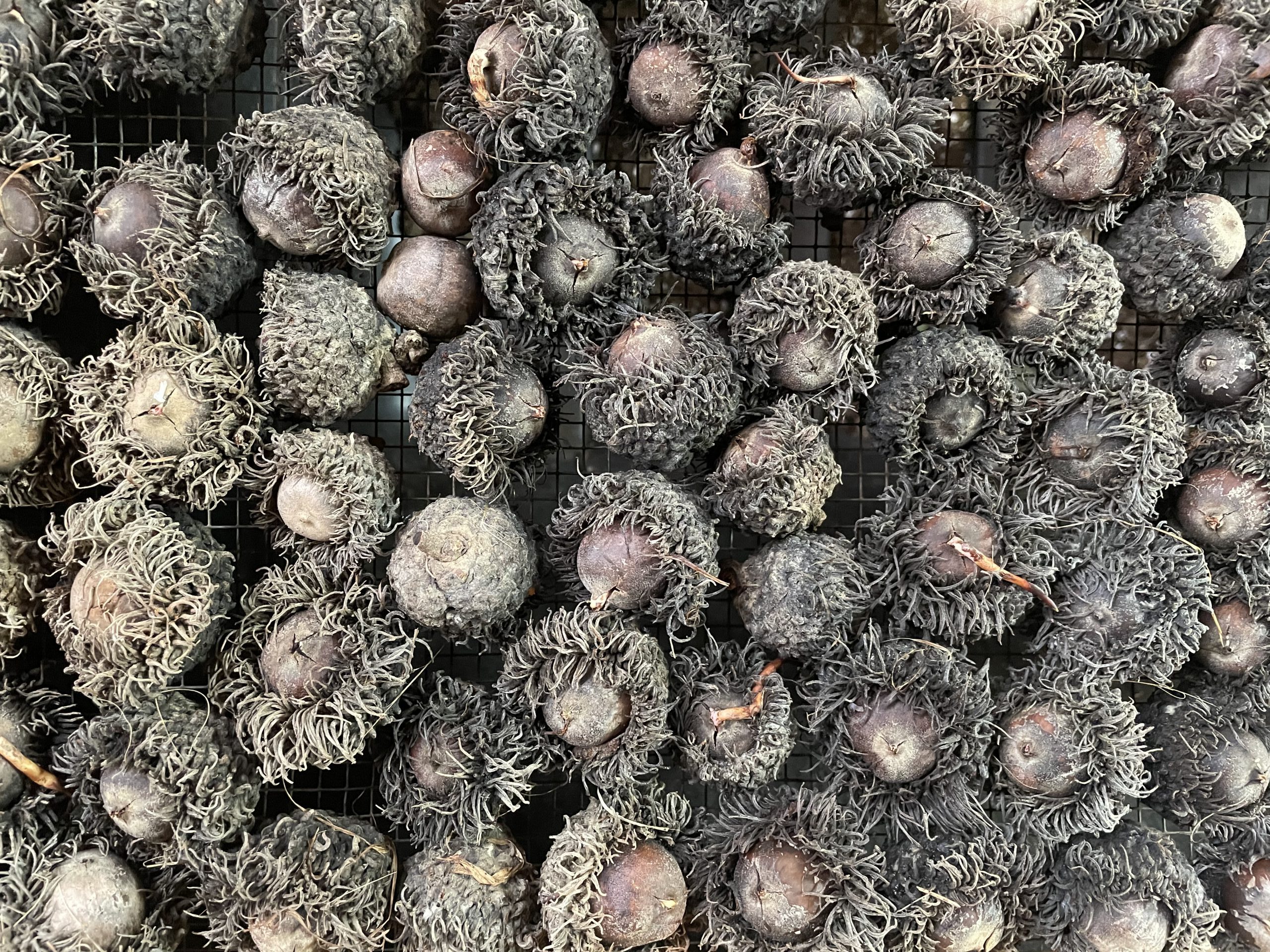
When I started my farm after college in the early 80’s I soon found out that my limited resources was not going to allow me to plant a typical orchard of grafted fruit cultivars let alone a barn to work in or irrigation. (That took me another decade to accomplish.) I began to look for trees that were in my region that were producing essentially ‘free’ seeds. This involved trips to the parks in my region where I could pick acorns from the ground and then plant them at my farm in beds. As you can imagine, the parks were places for a variety of activities for good and not so good. There was the mom with her kids on the play set while there was the drug sales person working the high school crowd. You would see a homeless person and once in a while a business person having lunch in the shade of the trees all in the same day. What was interesting was peoples lack of reaction to me. I was invisible. They would see me on my knees collecting acorns while putting them diligently into a white 5 gallon bucket. From this low vantage point, everyone totally avoided me giving me wide berth. I was the Aqualung of the park. I remember hearing a mom say, “Stay away from that man, Melissa” as she warned her child. I was on the edge of the play area collecting chinkapin oak acorns. It may have been my clothes. My farming attire was homeless like with stains on the pants and torn sweatshirts. I dressed the part! But Carhart was not a brand name back then either. I remember going into stores during lunch looking a bit ragged and smelling a bit like dirt and old grass. “Isle 2 please, something’s going bad” I would imagine hearing while picking out my cheese popcorn.
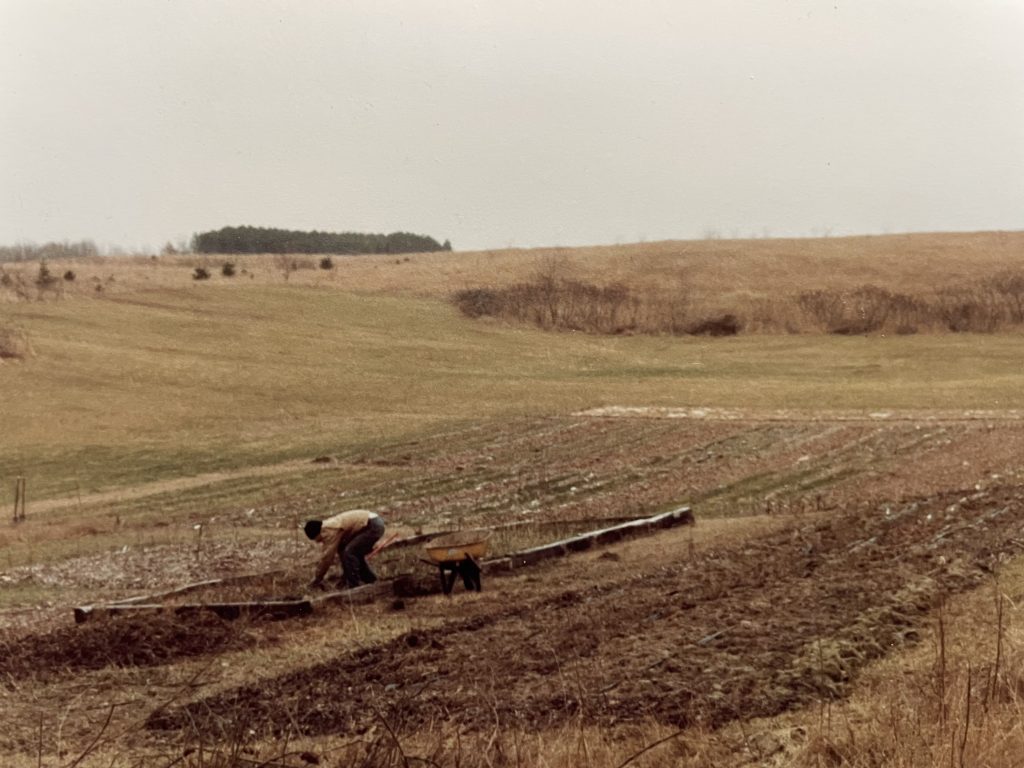
In the park, it was quiet. I was never interrupted nor ever questioned even by the park maintenance people. I became a fixture for a while and they would wave and smile. Apparently I was doing a service removing the acorns which were normally swept up and thrown away somewhere. It was this wonderful trip to these oak giants, I began to appreciate how wonderful this event was and viewed the sheer volume of acorns they produced as a miracle. These were 150 year old trees plus cranking out a lot of food for everything. What other orchard crop could boast such yields and longevity? The squirrels would eat around me. I left many acorns for them including the crushed and cracked ones from the mowers and people walking on them. This finally culminated into my new farm mission: Find as many oaks as possible and make my farm an oak repository. This to me was the most ecologically valuable thing I could do. I planted large volumes of them in beds in an open field.
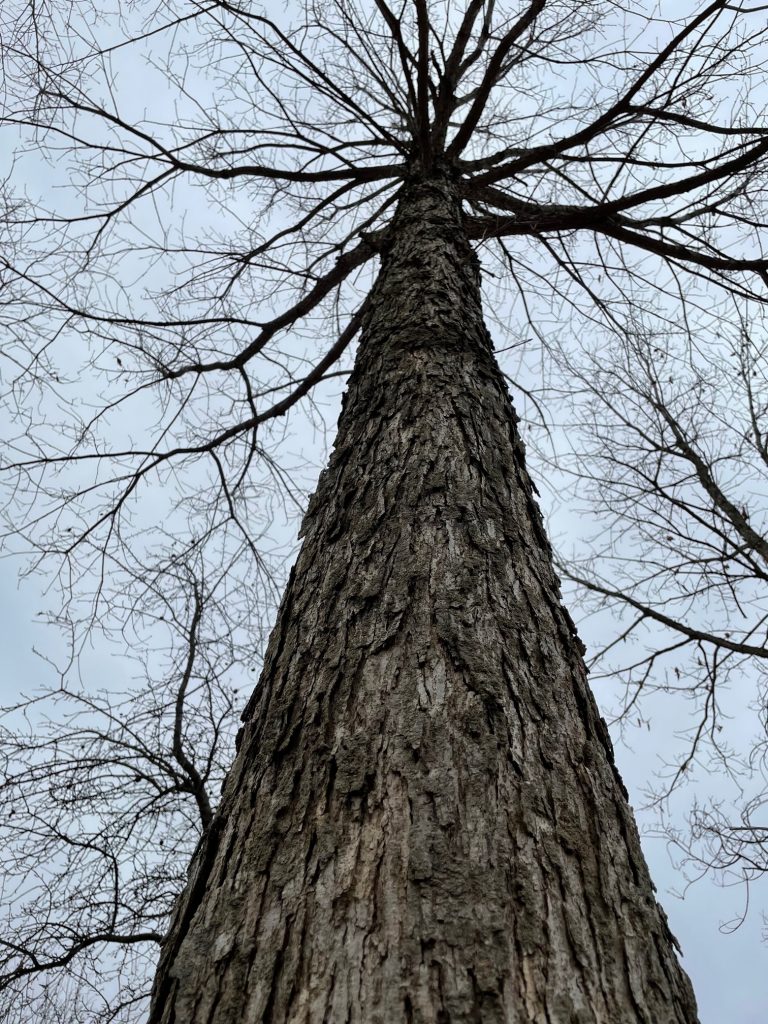
This swamp chestnut white oak hybrid called Beadles oak has thrived on my upland site. It has yet to produce an acorn but I wait patiently. The acorns were collected in the middle of a wetland in Louisiana. They were very low in tannin and considered heavy yielding.
This love of oaks also began a more ramped up goal for a more ‘edible’ acorn with naturally lower tannins. So each park visit over a decade or more I was always eating acorns. For the most part, I always kept a portion of one in my mouth like a throat lozenge. I found the oak tree inspiring. At one point, Gene Eulrich from Enid, Oklahoma put me in charge of the ‘Sweet Acorn’ group of the North American Fruit Explorers. I shared this with my family. We all laughed. I began making acorn bread for some of the farm and garden shows I presented at. They too laughed at the idea but did enjoy the bread. Since few people were producing white oaks even on a wholesale level, I made great sales from them in the beginning. I soon began a more vigorous attempt to find as many oaks as I could as well as purchasing them in volume from other collectors in other regions of the U.S. One place was the Cottam Gardens in Utah and another was the Davis Campus of the University of California. Others were public parks in cities from Louisiana to Pennsylvania. I grew as many as I could finding hybrids within species populations as well. I found others who also squatted under the oak trees, some with rakes in hands, and began shipping me acorns in bulk, sometimes hundreds of pounds. My personal park was now international in scope encompassing all cultures who love the oak and the use of the acorn. From Korea to Texas my mission was achieved. It turns out, I was not alone in that park collecting. Many others shared this love of the oak tree as well. To me it became a global experience.
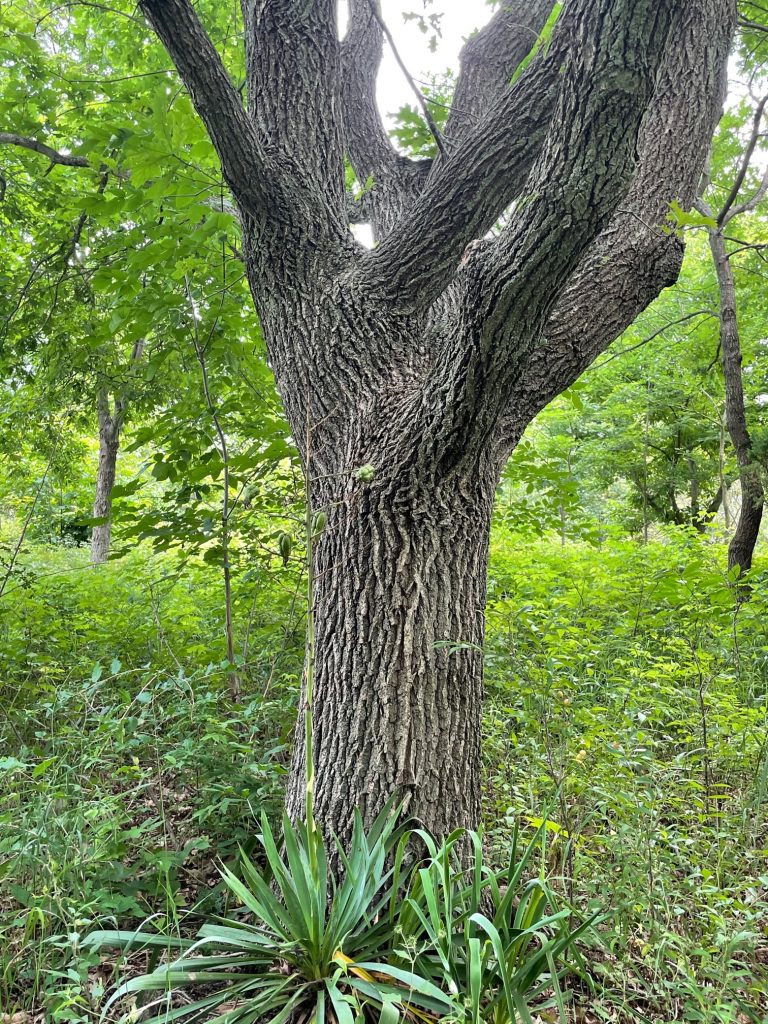
The seed for this hybrid oak of chestnut oak and english oak was collected by me as an acorn of english oak. It is the earliest hybrid oak I planted on my farm.
To this day, I see my mature 40 year plus old park trees on my farm and marvel at the speed and vigor of this often misunderstood genus of plants. Some are over 60 ft. tall now. J. Russell Smith in Tree Crops: A Permanent Agriculture thought the oak should sue the poets for their use in literature as a slow tree taking centuries to amount to anything.
The oak experience is not in a book. The only way to experience the tree and its life is to sit underneath the tree and have some lunch. Close your eyes. Take a nap. Touch the bark. Do a little pruning. Taste the acorns. Watch the squirrels. Check the flowers. Look at the female flower. Shake the male flowers. Watch the pollen fly. Collect the acorns. Always keep a few in your pockets as reminders. Collect more acorns. Remove the tannins and make acorn bread. Share it with others. Why is it books on oaks are so cold and boring? The authors have no personal connections. Maybe too much time botanizing in the cold lifeless taxonomy of Quercus in books. It happens. I too have read them. I can’t do it anymore. Acorn bread anyone?
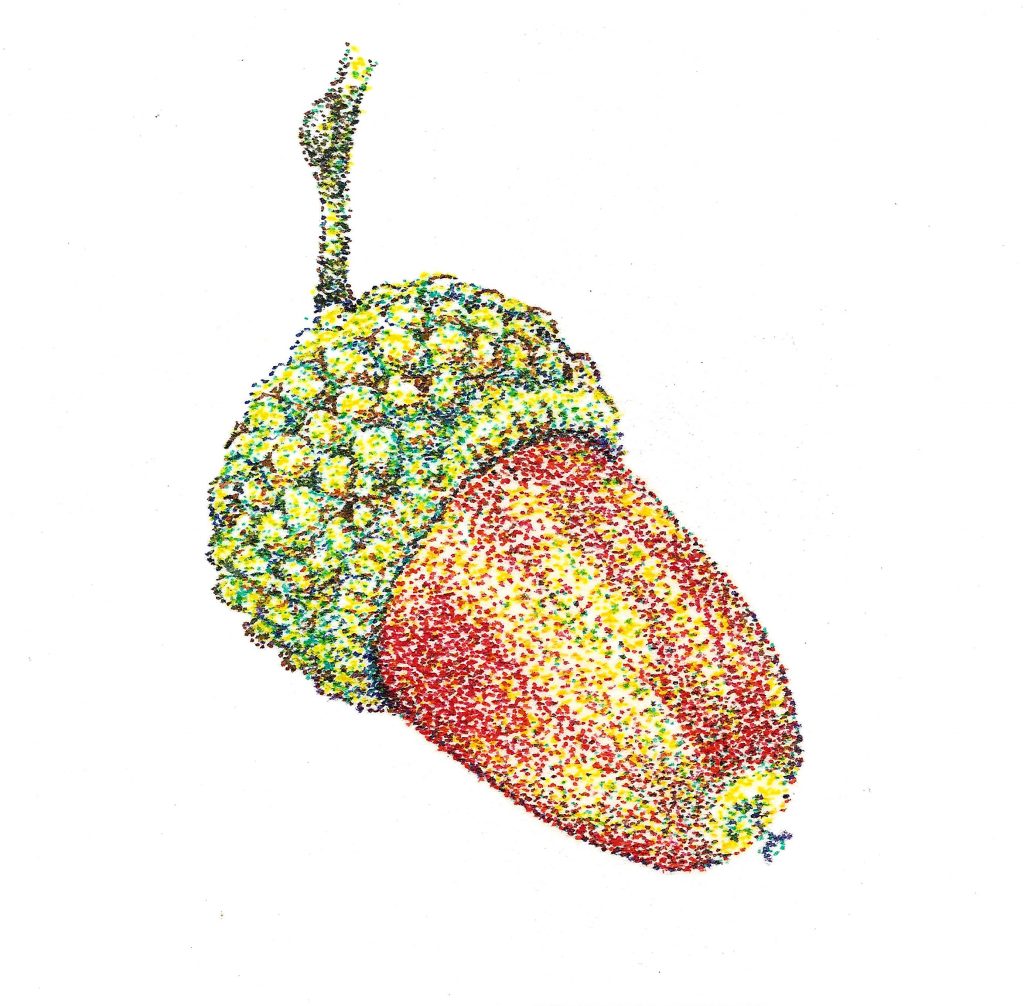
Madam-Sir, I am the Oak
The roots go deep on an oak but then so does the soul of a human. Can you tell me you never thought about it? Being a tree. Being an oak tree.
Being is the operative word here.
Is it the unmanifest that is considered being. One absolute being. Maybe slip into pure being and take a peek out the window of consciousness and look what the oak sees. It’s not that hard. We share a common base you ole oak tree you.
Not a surprise really. Wavy colors of gray, white and green as the wind passes through your leaves. A light golden green color exists below your canopy. A squirrel makes you laugh as their toe nails skip along on your twigs. A bird sings causing your roots to grow even more, ever deeper. Your acorns are just an expression of your giving nature of which less than one percent become your family moving through time all together as one. The rest is for the love of your animal friends. How did you come up with this 99 percent solution? Planck scale. Langrangian Field. No. It’s your nature.
Next time someone asks, do you know the oak tree? Repeat after me if you can, ” Madam or Sir, I am the oak.”
Kenneth Asmus
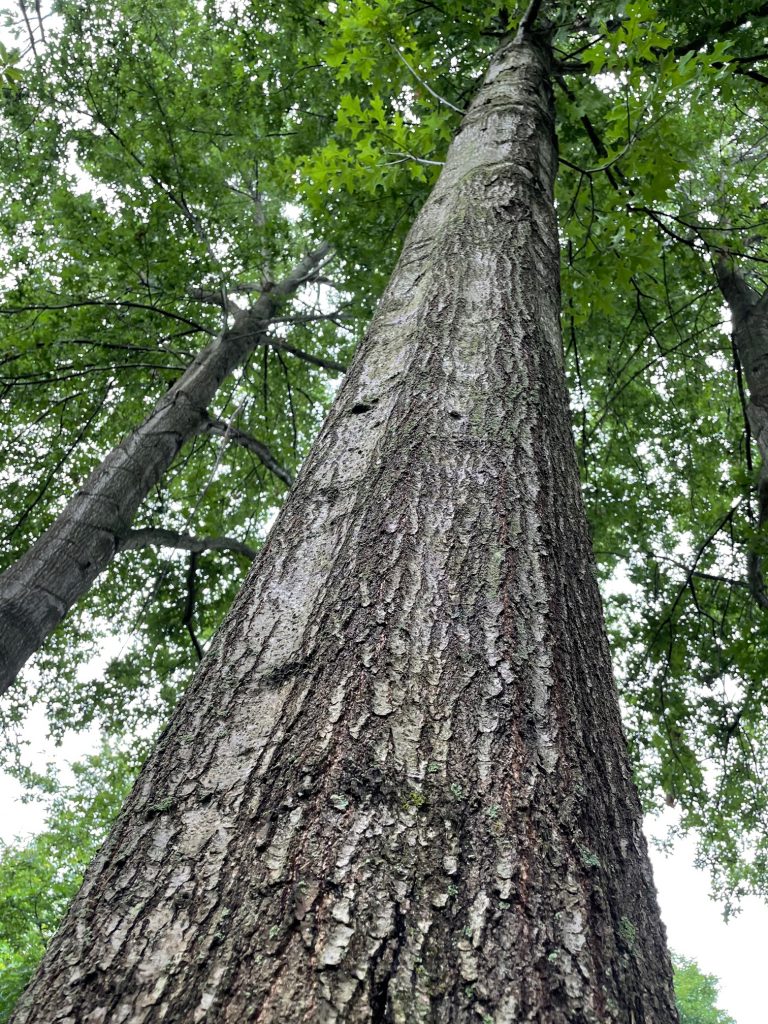
Nuttall Oak-The original seed source came from a park in Georgia of which I grew several hundred seedlings but kept three that showed no winter damage and grew very fast and straight.